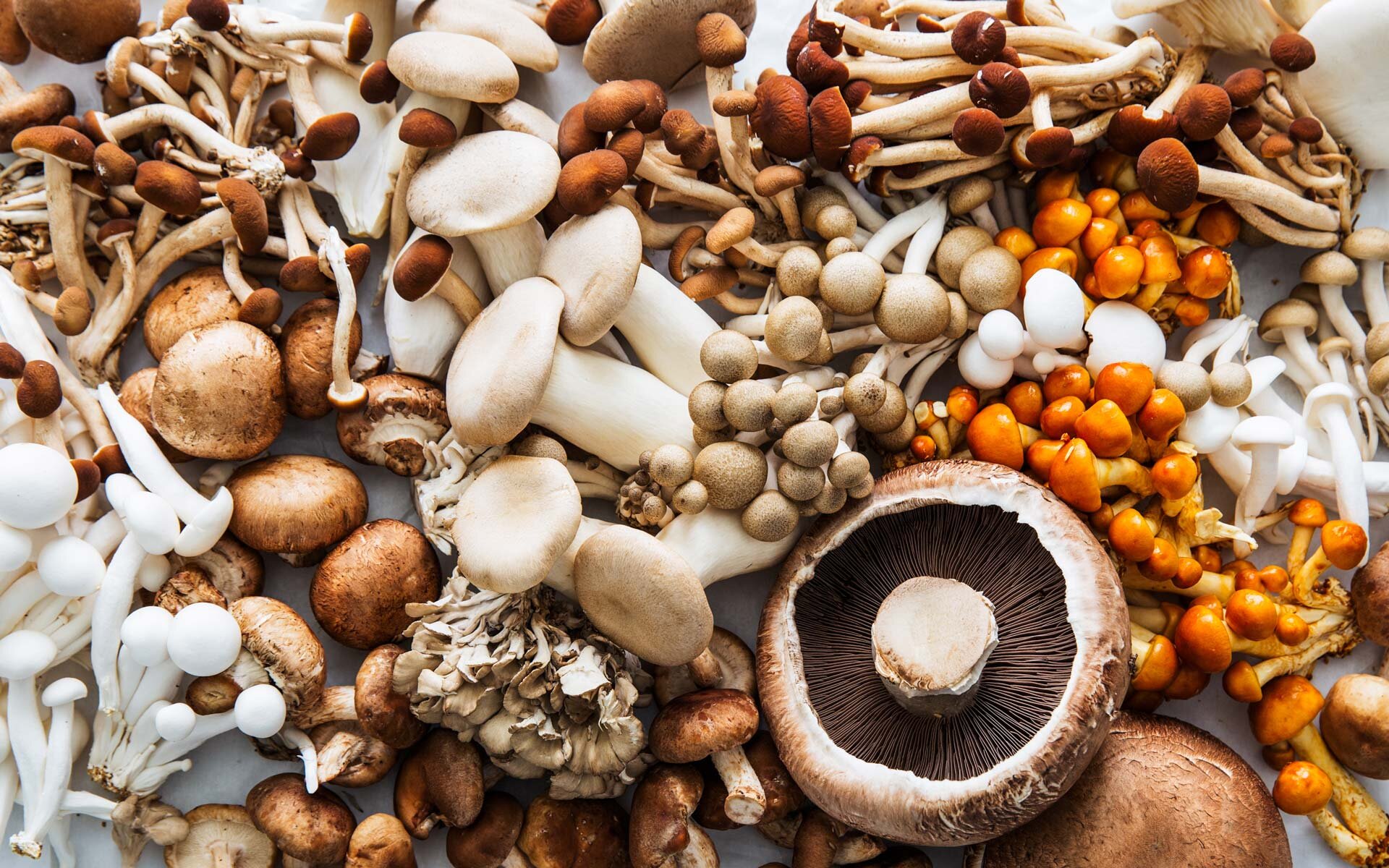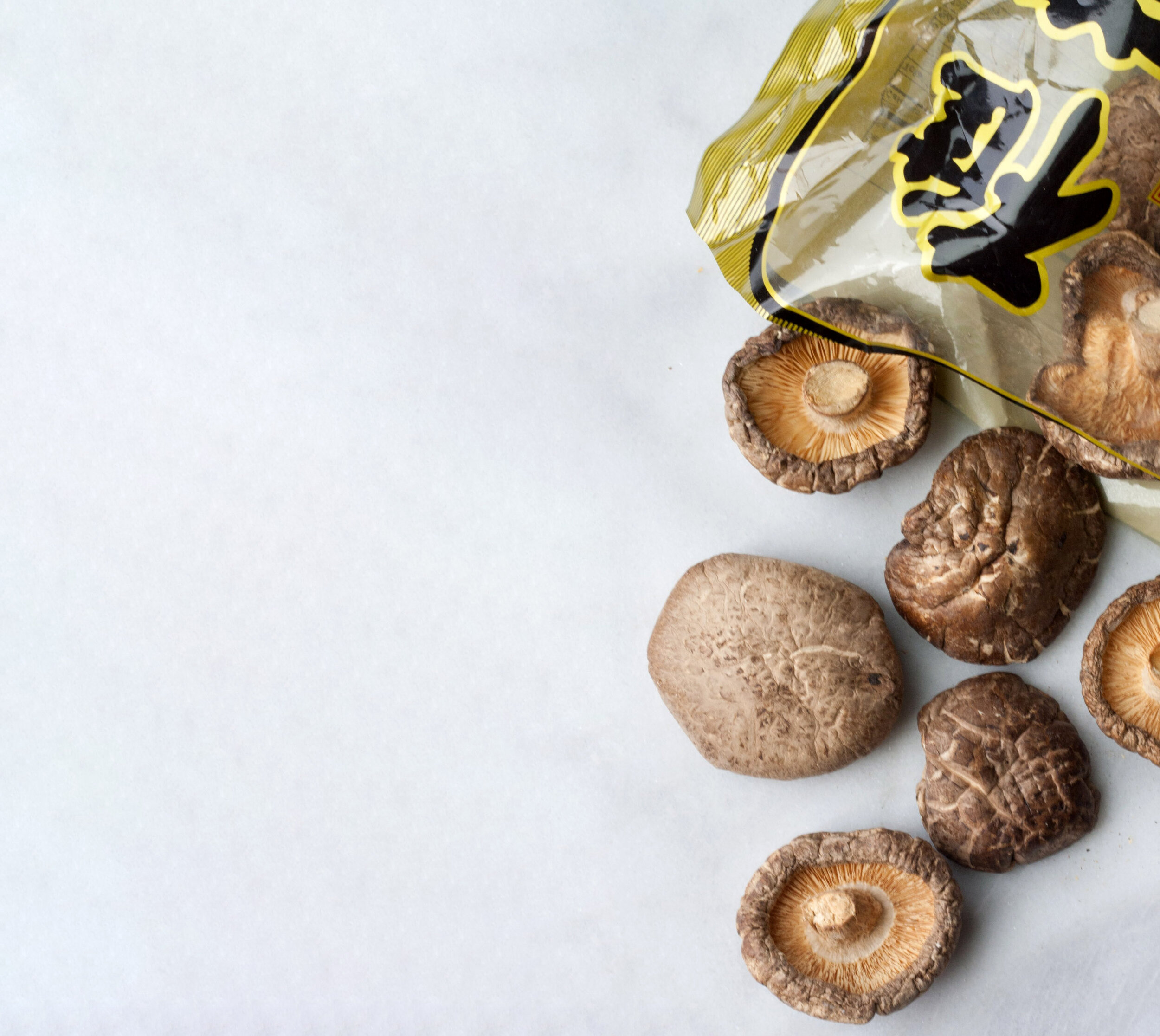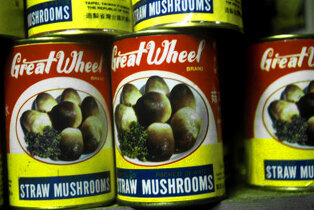
MARKETS
AVOID THE HASSLES OF LAWNS AND GARDENS.
FORAY IN CITY MARKETS.
As we pointed out earlier, urban mushroom hunting has risks. The mycophobic population can be dangerous, as well as their dogs, their lawn mowers, their sprays, and even their kids. Their obsession with the Perfect Lawn, free of mushrooms, may drive you crazy.
Even if you don’t reach the point of urban myco-desperation, you may come around to thinking that urban grocery stores are much better places to foray for mushrooms than your neighbors' lawns. Dogs are forbidden. Steps are easier to climb than grassy hills. And a screaming child is usually removed.
Also, you're guaranteed to find something. Depending on the season, there are at least a dozen species of mushroom—and probably more—available in markets in most urban areas. That's not counting Peziza domiciliana, which may well be growing in the basements of some of the more down‑to‑earth shops.

MORE TO IT THAN MUSHROOMS
Most important, if down deep you really hate mushrooms, you will discover that there is much more to a mushroom foray in markets than mushrooms.
You can start with a Dim Sum breakfast in your local Asian neighborhood. Carry out one of those excellent roast ducks for dinner, and your market foray is already a success.
With your duck in hand, walk to any nearby Asian market (Chinese, Thai, Vietnamese, etc.). In Denver, we strolled to the "Pacific Ocean Marketplace.” Inside, stacked alongside the cans of banana blossoms in brine, we found about 16 brands of canned mushrooms—and it hadn’t rained a drop in months. Pick a can of "Golden Mushrooms.” Identification is easy, no clumsy field guide necessary, because the can is neatly labeled, Flammulina velutipes, from Taiwan. It’s commonly referred to by its Japanese name, Enokitake (ee‑no‑kee‑tah‑kee) or simply Enoki. Trouble is, out of a can, most mushrooms are slimy and bland, a bad combination. On top of that, many canned varieties have a metallic flavor that can ruin a dish. So, overall, skip the cans and go for the fresh or dried shrooms. They’re much better, as is the case with fresh Enoki.
Pick a can of “Golden Mushrooms.” Identification is easy, no clumsy field guide necessary, because the can is neatly labeled, Flammulina velutipes, from Taiwan. It’s commonly referred to by its Japanese name, Enokitake (ee‑no‑kee‑tah‑kee) or simply Enoki.
Trouble is, out of a can, most mushrooms are slimy and bland, a bad combination. On top of that, many canned varieties have a metallic flavor that can ruin a dish.
So, overall, skip the cans and go for the fresh or dried shrooms. They’re much better, as is the case with fresh Enoki.
Many Asian and upscale markets sell fresh Enoki. They often flourish in the fresh produce section, possibly near the snow peas. Cultivated in California and packaged in plastic, these mushrooms, which are similar to a white four‑inch nail, taste like they look—bland. They definitely add a quirky, exotic look and a crunch to a salad or soup. (Sushi joints decorate soups and rolls with them.) Cooked lightly in butter, they become slightly sweet—worth a try.
You might stock up on this fungus if cancer runs in your family because it fights tumors in animals, according to Japanese studies, which state that high consumption of F. velutipes among growers and their families in Nagano City, the center of cultivation in Japan, is responsible for the low incidence of cancer there.
If you hunt mushrooms in yards, particularly in the spring or fall, you might find the wild variety of Flammulina velutipes, also called the "velvet foot," on stumps. The wild Enoki looks completely different, with a yellow‑brown cap and a brown stem that is velvety at the base, and it tastes much better. In fact, it’s one of the best-tasting urban shrooms you can find—with a distinctive sweet flavor.
DON’T WRAP YOUR CANS IN WAX PAPER
Even if you don’t buy them, it’s still fun to look at all the cans of mushrooms at the Asian markets, and self-respecting city foragers should sample a few.
One variety that’s worth trying, more for its looks than taste, is called "Straw Mushrooms," Volvariella volvaceae, from Malaysia, Taiwan, and Indonesia. Select a can that is marked "whole" not "broken." These are much more attractive mushrooms. A wild species is called Volvariella bombycina. (Don't wrap your cans in wax paper and, for God's sake, don't dig into the metal shelf with your collecting knife. There is no hidden volva or mycelium there.)
The half‑inch caps of Straw Mushrooms (also called "Paddy Straw Mushrooms") are brown on top, tapering to white at the base. They have a "Walt‑Disney‑mushroom look,” notes Joanne Salzman, a market forager. Unfortunately, although attractive, they have virtually no taste out of a can. You might also find dried straw mushrooms, but they don’t reconstitute well and taste rather musty.
TRONG LAM, FORAY LEADER
As you continue your foray at the Asian market, you might bump into the owner—as we did at the Pacific Ocean Marketplace in Denver. His name is Trong Lam, and he makes an excellent foray leader.
Lam, a Vietnamese "boat person" who came to the U.S. 12 years ago, showed us small bottles of "Chinese Caterpillar Fungus and Royal Jelly," available in packages with moths and caterpillars on the cover. Twenty‑five percent of the concoction is Cordyceps sp., which grows out of insect larvae that are attacked by the fungus.
The package advises imbibing the contents of "one bottle daily in the morning or before sleep. It can be taken without distinction of sex and age."


